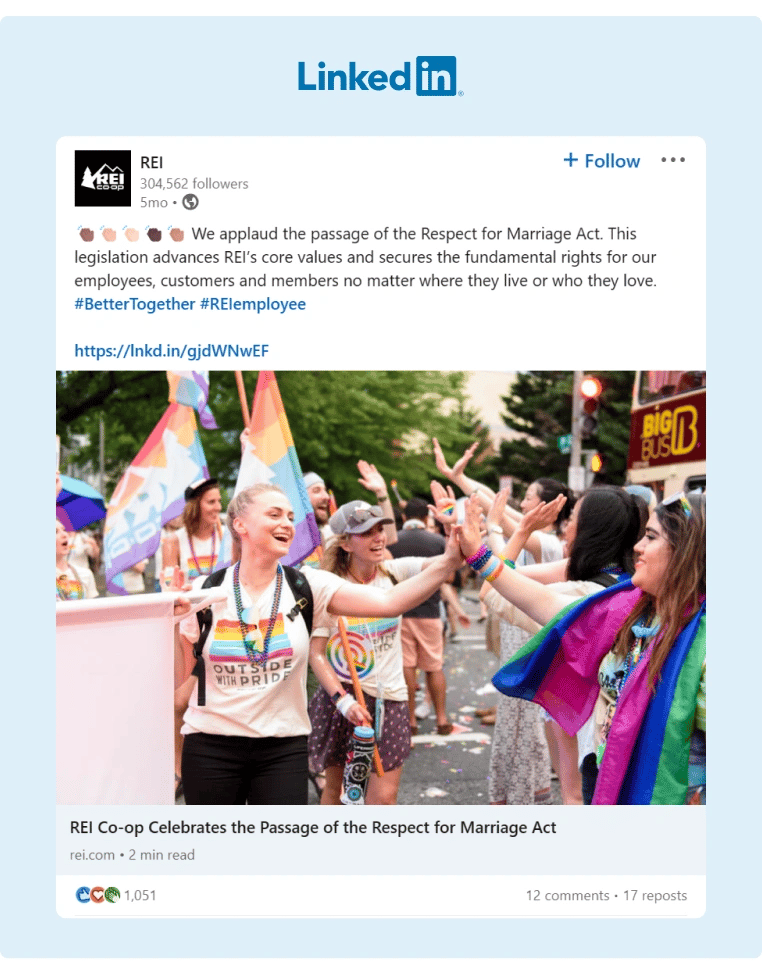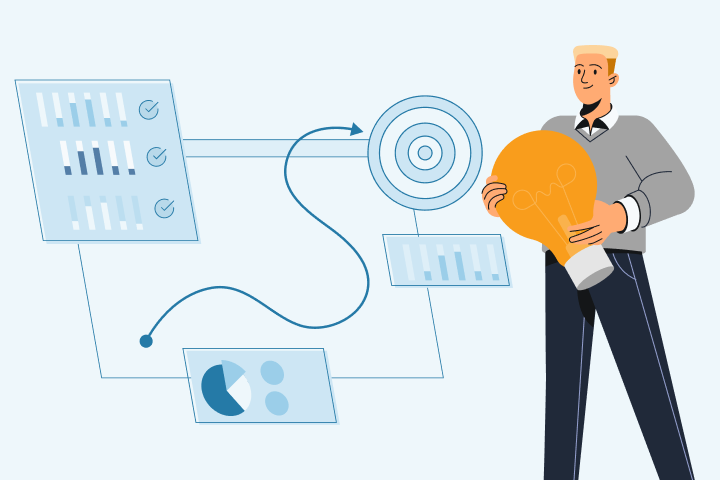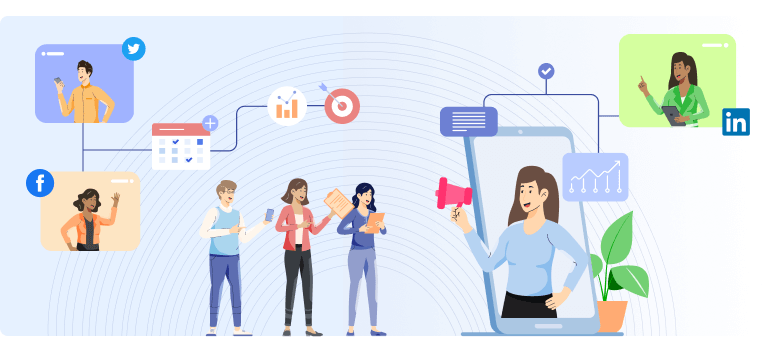Is Brand Advocacy the Key to B2B Software Company Growth?
If you’ve ever scrolled through your news feed and seen individuals raving about their favorite software brands’ new product launches or software updates, that’s brand advocacy in action.
Brand advocacy marketing is an old-school marketing technique that is as relevant today as it was a century ago. By encouraging word-of-mouth referrals from employees and customers, it’s the ideal technique to create brand awareness around your B2B SaaS brand.
Here’s why: 70% of consumers are more likely to trust friends, family, and influencers over messaging directly from a brand. Modern SaaS customers are naturally cynical of advertising. This is especially true among younger markets, with only 42% of Gen Z and 50% of Millennials admitting that they trust big businesses.
But, how do you drive this sort of excitement? And, is brand advocacy the key to B2B growth? To learn more, we’re diving into the ins-and-outs of SaaS brand advocacy.
What Is Brand Advocacy?
Brand advocacy is a strategy that uses brand advocates to elevate a brand through word-of-mouth advertising. It bypasses consumers’ cynical attitudes toward direct advertising by tapping into the power of word-of-mouth messaging through trusted peers. The result: your audience is more likely to listen, and potentially, make a purchase.
Brand advocates can be employees, customers, partners, and influencers. By tapping into this pool of individuals to produce (and share) authentic content, your marketing will feel natural and organic.

When a review or recommendation comes from people that your target market trusts, it fosters brand trust and loyalty, which brings us to...
What Are the Benefits of Brand Advocacy?
When used correctly, brand advocacy is a powerful tool in your marketing arsenal. For B2B SaaS, brand advocacy offers several key benefits:
-
Reduces Marketing Costs (and Makes Money). With brand advocacy, you aren’t paying traditional marketing costs, and your campaign isn’t tied to a budget which can limit how long your campaign runs.
-
Helps Your Company’s Growth. As you increase your lead generation (and sales), naturally, your company will grow as a result.
-
Allows for Social Selling. By utilizing your employees’ social media channels to connect with potential leads, your employees will be social selling.
-
Boosts Brand Awareness. As your brand advocates share content on their social media channels, they’ll increase your brand’s exposure to new audiences.
Now that we know the benefits of brand advocacy, let’s take a look at some ways to best utilize this strategy in the SaaS industry.
How To Use Brand Advocacy in Your SaaS Business
Depending on your B2B marketing goals, you can use brand advocacy to:
- Improve your brand image.
- Build credibility and authenticity in your SaaS products.
- Generate more organic and high-value leads.
- Reach a wider audience.
To achieve these goals, here are some strategies that you can implement:
Utilize Customer Feedback
98% of people read online reviews for local businesses. So, it’s no surprise that positive reviews and recommendations from customers are a powerful tool for driving sales.
Creating a feedback loop is a great way for SaaS companies to understand customer pain points and needs. By offering customers the opportunity to provide feedback, they feel valued and want to engage with your brand. In turn, you’ll have valuable data to improve your products as well as the opportunity to directly engage with customers.
You can also utilize customer feedback to create targeted social media posts that build trust and credibility with current and potential new customers, which will generate high-quality leads.
Start an Employee Advocacy Program
Tap into your most valuable resource: your employees. By using an employee advocacy program to transform your workforce into enthusiastic brand advocates, they’ll boost your brand image and cultivate trust with your audience, ultimately, gaining loyalty from new and existing leads.
To maximize your employee advocacy program, an employee advocacy platform like GaggleAMP can help you streamline your employee advocacy efforts with AI-powered paraphrasing technology as well as incentivize employee participation and engagement through gamification and rewards.
Now let’s take a look at some examples of successful businesses who used brand advocacy to boost their brand awareness and lead generation.
Successful SaaS Brand Advocacy Examples
When it comes to B2B marketing, you’re spoilt for choice. From SEO techniques - like boosting web page speeds by upgrading to a fast web host, like 20i - to reaching your target market directly through social media platforms - like LinkedIn - there’s an almost endless list of opportunities to choose from. So, why focus on brand advocacy?
Savvy SaaS brands are implementing key advocacy trends to build their brand advocacy. Some of these trends include:
- Utilizing their customers and employees as brand advocates to spread their messaging.
- Partnering with influencers for better brand awareness.
- Using an employee advocacy program; thus, making it easier for employees to share branded content on their social media channels.
Now let’s take a look at three examples of successful businesses who are using these trends to build their brand advocacy.
1. Apple: Shot on iPhone Challenge
Apple’s marketing is a great example of brand advocacy in action. Apple loves to build a buzz around its products to get tech enthusiasts talking, and it did just that with its Shot on iPhone Challenge.
During the campaign, the tech giant asked Apple users to share their favorite macro photos on Instagram and X. To participate, they used the hashtags #ShotoniPhone and #iPhonemacrochallenge.

Not only did this campaign create user-generated content for Apple, but it also encouraged loyal customers to keep purchasing (and using) iPhones, activated new customers to buy an iPhone (if they wanted to participate), and created a feeling of community among participants. Genius!
2. Cisco: Cisco Champion Program
Cisco is a great example of a company that drives advocacy through its partnerships with influencers, specifically its influencer marketing platform: the Cisco Champion Program.
Here, influencers sign up to receive exclusive brand information and insights into new products. They become some of the first to test Cisco’s SaaS tools in exchange for reviews and advocacy on social channels.

By incentivizing influencers to sign up, Cisco gets valuable feedback data as well as positive brand exposure.
3. Capital Rx: Employee Advocacy
Capital Rx, a health tech company, knows the value of having an employee advocacy program to amplify its brand advocacy efforts. To streamline the content curation process and become more strategic, it selected GaggleAMP for its employee advocacy platform.
Capital Rx used GaggleAMP to drive social awareness and engagement, as well as increase brand awareness, with the help of its employees. As a result, with just 30 active pilot members, Capital Rx saw a 395% increase in message reach and a 489% increase in social interactions, just to name a few of the positive results.
These three brands are just a handful of examples of SaaS companies using brand advocacy to strengthen their marketing efforts and generate engagement, feedback, and leads.
Ready to boost an existing SaaS brand advocacy program, or start one from scratch? Let’s now take a look at some tips for an effective brand advocacy program.
4 Tips for an Effective Brand Advocacy Program
With 90% of B2B purchasing decisions influenced by recommendations, having a solid brand advocacy program is crucial for SaaS companies looking to drive growth.
Here are four tips for an effective brand advocacy program:
1. Know What Drives Brand Advocacy
Building brand advocacy starts with understanding what engages your audience. Conduct surveys with your target audience to learn their pain points, needs, etc. In addition to researching your audience, be sure to keep an eye on demographic trends, as well.
For example, let’s say your target audience is Millennials. 83% of Millennials want brands that align with their values. So, if you know that innovation and sustainability are key values for your target audience, making them a focus of your brand image is likely to boost advocacy.

2. Determine How To Engage Your Employees
Your employees are a key part of your B2B advocacy campaign. They possess key insights into your products and services. However, they need to be engaged in order for them to have a positive impact on your brand advocacy efforts.
Determine how you will engage your employees. For example, implementing an employee advocacy platform and giving them the tools (e.g., employee advocacy platform) and motivation (e.g., gamification) to advocate for your brand. In turn, they’ll play a strategic role in spreading the word about your SaaS products.
3. Influencers Should Be Chosen Carefully
Teaming up with influencers has been one of the biggest trends in brand advocacy in recent years. But, don’t rush into influencer partnerships.
First, do your research, then choose carefully. Remember, the influencers that help build a buzz around your SaaS business will also reflect your brand image. So, partner with influencers who share your values and appeal to your target market.
4. Use Analytics to Monitor Success
A successful brand advocacy campaign isn’t static. As the market changes and business needs evolve, your advocacy techniques will need to be modified to continue to drive long-term growth.
This is where analytics comes in. By monitoring a range of data (like follower count, click-through rate, and conversion rates) you can monitor the success of your brand advocacy efforts and refine your advocacy strategy as needed.
Ready To Boost Your Brand Advocacy?
Brand advocacy drives business growth through excitement, awareness, and loyalty. It’s one of the best strategies to build credibility among modern consumers while bringing more buzz to your SaaS brand.
An employee advocacy tool like GaggleAMP can help you take your brand advocacy efforts to the next level. To see why more than 100,000 people trust GaggleAMP for their employee advocacy, schedule your demo today.











